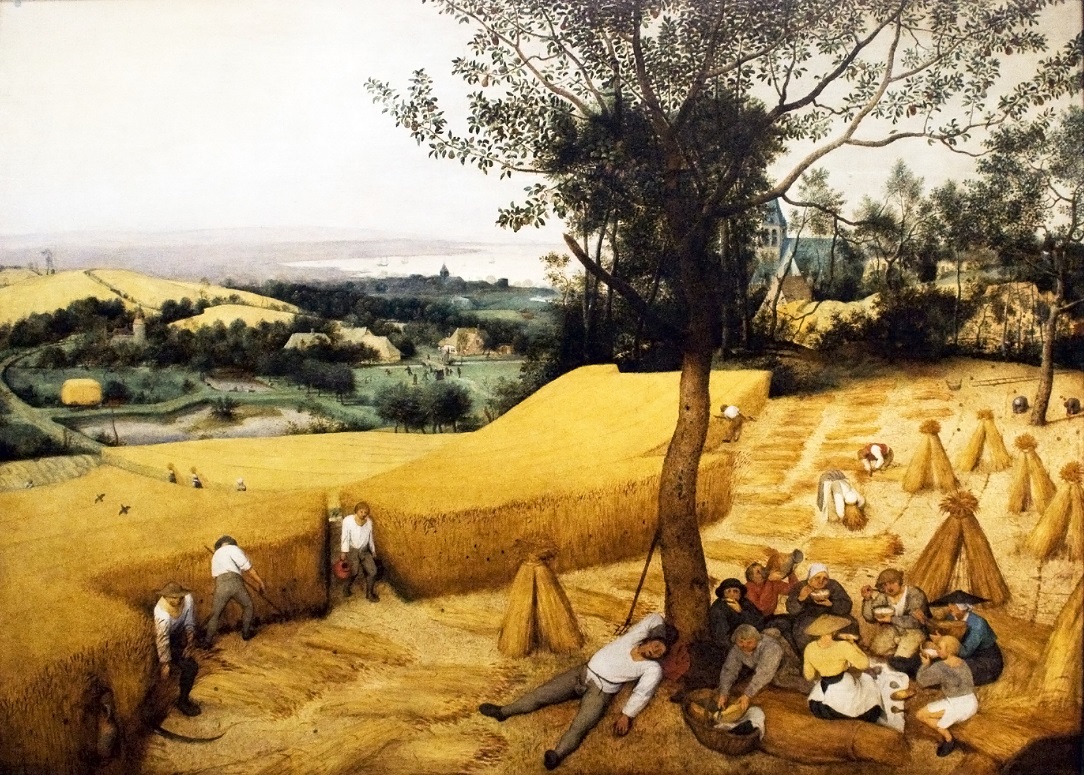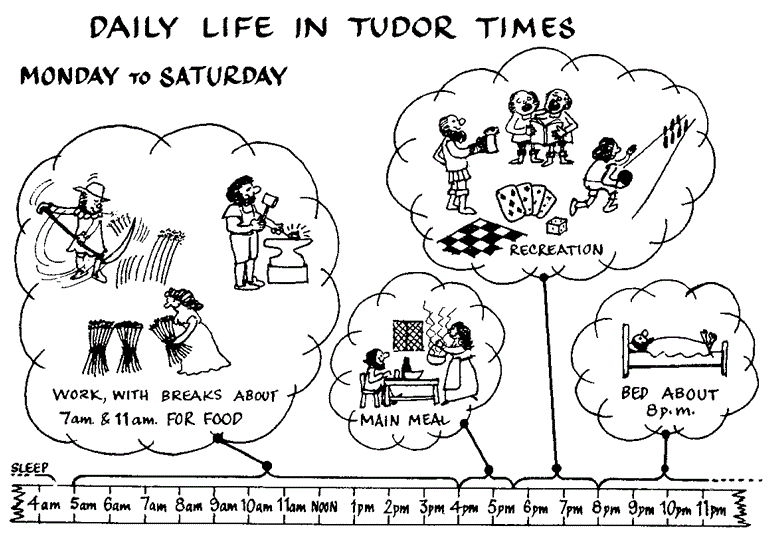
Life on the Farm

Introduction
What was life like for ordinary people in Tudor and Stuart times? Most people worked on the land, so perhaps the sources on these two pages can help us to find out.
During Tudor and Stuart times, many landowners in the south and east of England changed from growing crops to sheep farming. The landowners put up fences to enclose the land. This process was called enclosure. Fewer workers were needed for sheep-farming than for growing crops, so many farm workers lost their jobs.
In 1549, thousands of farm workers met at Mousehold Heath in Norfolk. They were led by Robert Ket, a local leather worker. They pulled down a few fences and captured Norwich. The rebellion was brutally put down, but attacks on enclosure fences were common for the next hundred years.
After you have studied this webpage, answer the question sheet by clicking on the 'Time to Work' icon at the top of the page.
Links:
The following websites will help you research further:
Farming in the Early Modern era:
• Farming
• Ket's rebellion
• BBC learning video
• Interesting, simple leaflet describing how one school experienced a 'Tudor Farming Day![]()
![]()
![]()
1 The Harvest
This painting by Pieter Bruegel the elder in 1564 shows the corn harvest in the Netherlands. It is one of a very famous series of paintings he did called 'the Months', and is the fourth in the series (August). It shows harvesters pausing for a meal during the harvest. Notice the gleaners (right), poor people who followed the harvesters and gathered any seeds which fell from the ears as the corn was harvested.

2 A Ploughman's Day
This idealised description of a ploughman's day is taken from Gervase Markham, Farewell to Husbandry (1653). Markham was a poet and writer of books on country life.
The ploughman shall rise before 4 o'clock in the morning, and after giving thanks to to God for his rest, he shall go into the stable, and first he shall feed his cattle, then clean the barn, rub down the cattle and clean their skins from all dirt...
And while the cattle are eating their food, he shall make ready his collars, harness and plough-gears, seeing that everything is fit and in its proper place, and to this work I will allow him two hours; that is from four o'clock till six.
Then he shall come in to breakfast, and to that I allow him half an hour, and then another half hour to the yoking and gearing of his cattle, so that at seven he may set forth on his work; and then he shall plough from 7 o'clock in the morning till 2 in the afternoon.
Then he shall unyoke and bring home his cattle, and having rubbed them and cleaned them, he shall feed them. Then shall the servants go in for their dinner, for which I allow half an hour.
It will then be towards 4 o'clock; at which time he shall go to the cattle again and, rubbing them down and cleaning their stalls, will give them more food; which done, he shall go into the barns [and work there].
By this time it will draw past 6 o'clock; at which time he shall come in to supper, and after supper he shall sit by the fireside, mend shoes for himself and the family, or prepare thread for spinning, or pick and crush apples for cider, or else grind malt for making beer, pick rushes for candles, or do some household work until it be fully 8 o'clock.
Then he shall take his lantern and candle, and go to see his cattle, and having cleaned their stalls, he shall put down straw for them, see that they are safely tied, and then give them food for the night.
Then, giving God thanks for all the day's blessings, let him and the whole household go to their rest till the next morning.
3 History Alive
This drawing of an agricultural worker's day comes from the brilliant textbook History Alive, written in 1968 by Peter Moss, with illustrations by George B Hamilton.
